“You know you got to give me some of those greens,” he said.
“Oh, you like greens?”
“Mmmmmm.”
How bold. This guy had just shown up at our door to fix a problem with our internet connection, and these were his first words. Our garden is in the front yard right by where he’d parked.
“Yeah, for sure!” I said. “I didn’t know anyone else ate greens around here.”
“I grew up in Chicago, but I spent summers with my grandma in Georgia.”
I let him get to work, and I happily walked out and harvested collards, chard, and kale.
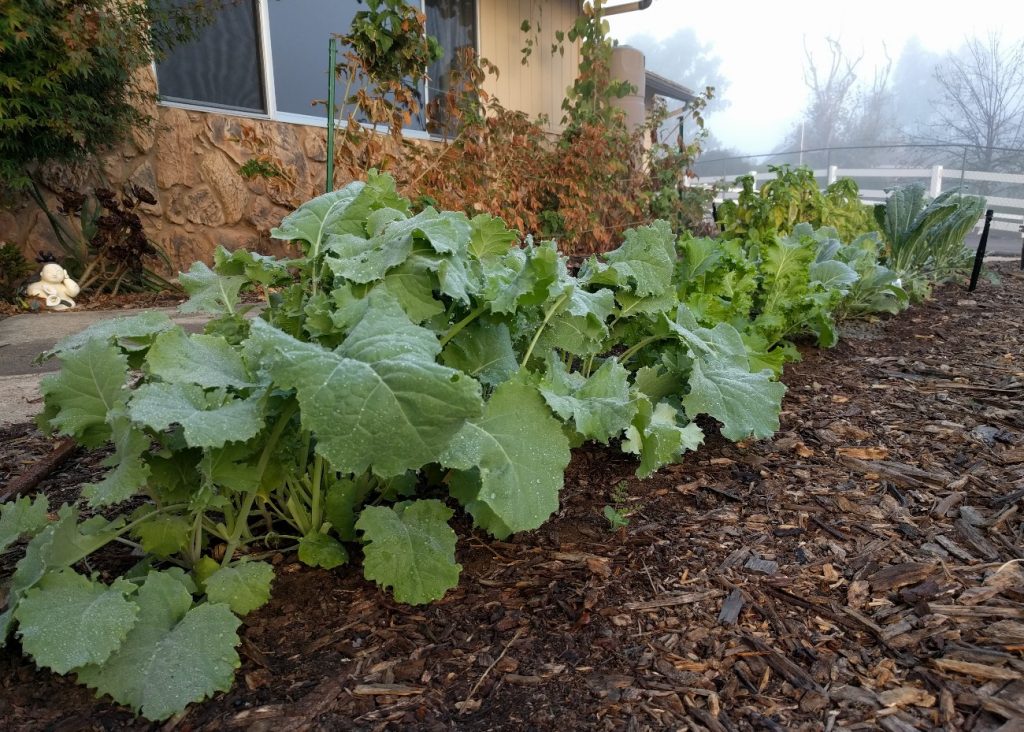
Moroho is sentimental and nostalgic for me. Moroho is the word for greens in Lesotho, the small country in Africa where my wife and I met, where we both were living as Peace Corps teachers, and where we ate moroho almost every day. It’s much more than just another vegetable.
Maybe you are one of the few others around here who eats greens and who therefore would love to have it coming straight out of the garden. It’s the only way.
While I learned to grow greens in Lesotho, I’ve been growing them back home in Southern California for about ten years now.
Timing
In Lesotho greens grew best in the summer, but in Southern California greens grow best in winter, plus the cooler periods of fall and spring. They suffer if you ask them to grow during the heat of summer, unless you live in the marine layer right on the beach.
My greens are so happy right now, in the rainy, mild weather of mid-January. This is the prime of their life. They taste sweet and stand tall. In summer, they don’t taste as good, they’re constantly wilting no matter how much water you give them, and they often go to flower fast — if you live inland like me; I’m twenty miles from the beach.
I start sowing seeds of greens in August or September, continuing through fall, through winter, into spring, stopping by May. At that point, whatever plants I have in the garden I care for as far into summer as they’ll allow (how long will June gloom last this year?), but I don’t sow or plant new greens again until at least August. Every year’s a bit different, but that’s the general pattern that I’ve found successful in gardens from two to twenty miles from the beach in Southern California.
Cabbage is an exception here. I include cabbage in the greens category. But only sow it between August and about October. That means you can plant seedlings from September through about January. Cabbage is slow growing so if you plant later, you’ll likely deal with lots of aphids, the plant will form only a small head, and it will not taste as sweet as you hope.
I’ve found chard to be the most tolerant green to our summer warmth. I’ve grown it all the way through the summer occasionally. But usually I just switch to eating sweet potato greens during the heat of the summer. Even though chard will tolerate heat, sweet potato greens adore it.
This last summer, however, I brought some Lacinato (dinosaur) kale through the summer season, and it continues to produce well here in its second winter — and taste better than it did in summer. So it’s now the same age as my daughter, but look who’s taller:
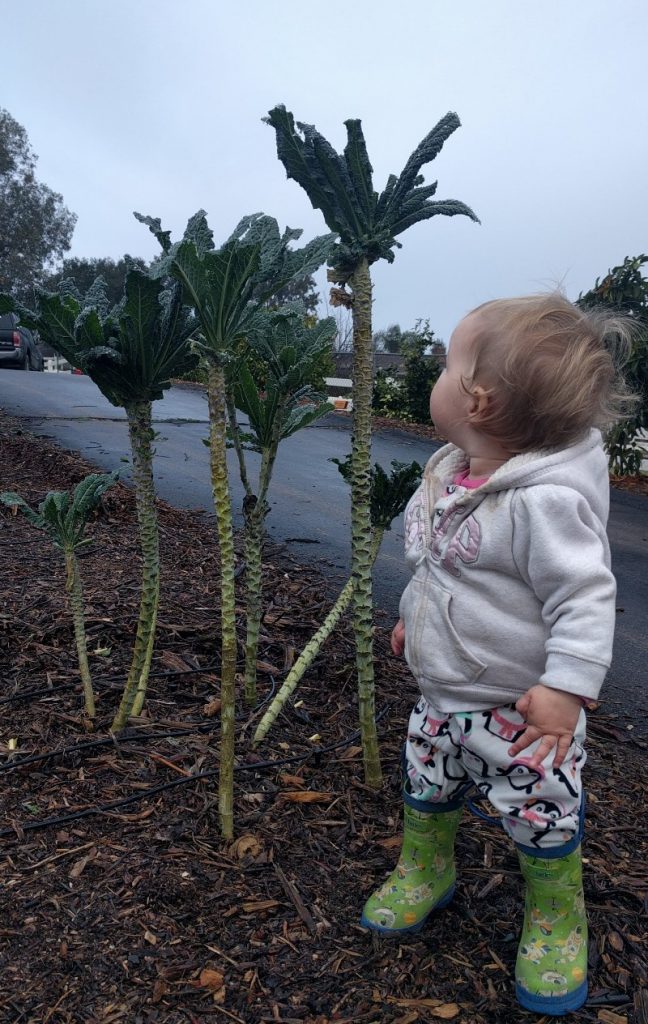
(See this fun update: “How tall can dinosaur kale get?”)
Varieties
I haven’t met a type of green that doesn’t grow well here or that I don’t love to eat, as long as it’s grown in the right season. The types I’ve grown include kale and chard and collards, plus mustard, spinach, turnip greens, cabbage, and choy.
A couple of favorites are ‘Dwarf Blue Curled’ kale and ‘Bright Lights’ chard, plus any and all collards.
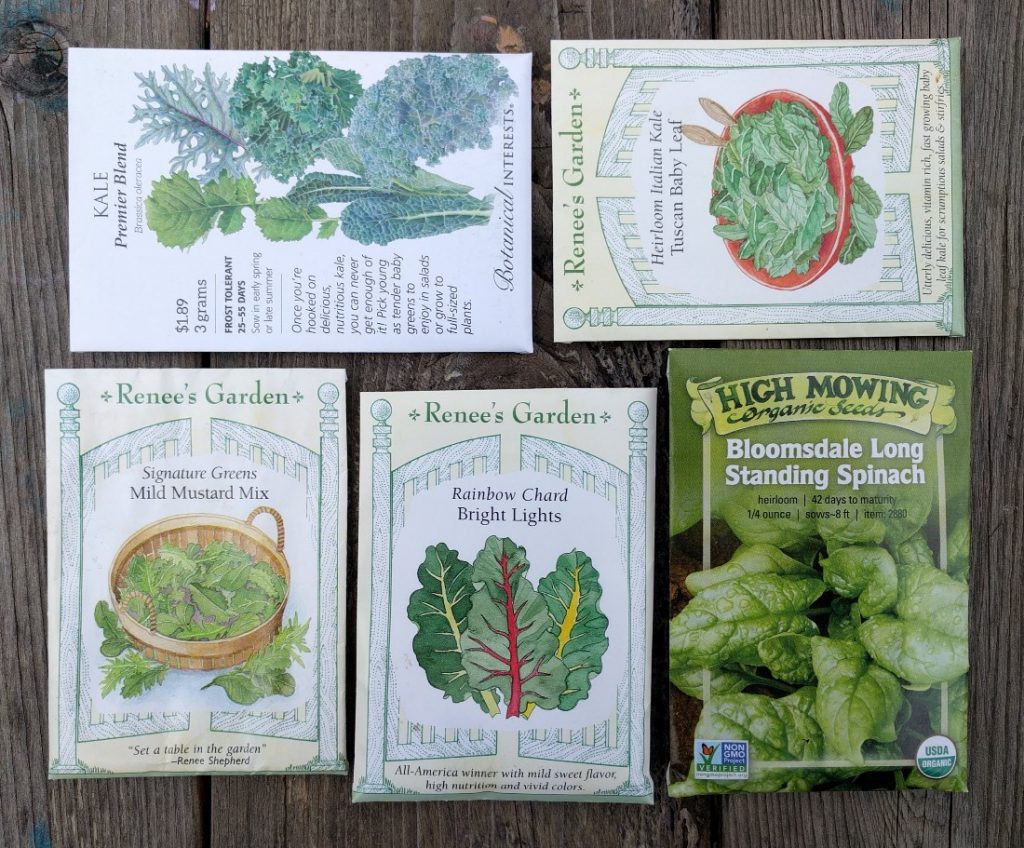
But I always plant a mixture because that’s how I like to eat it. I grow mostly sweet stuff like kale, collards and cabbage, and then a little spicy or bitter stuff like mustard and chard. That combination and proportion tastes best to me.
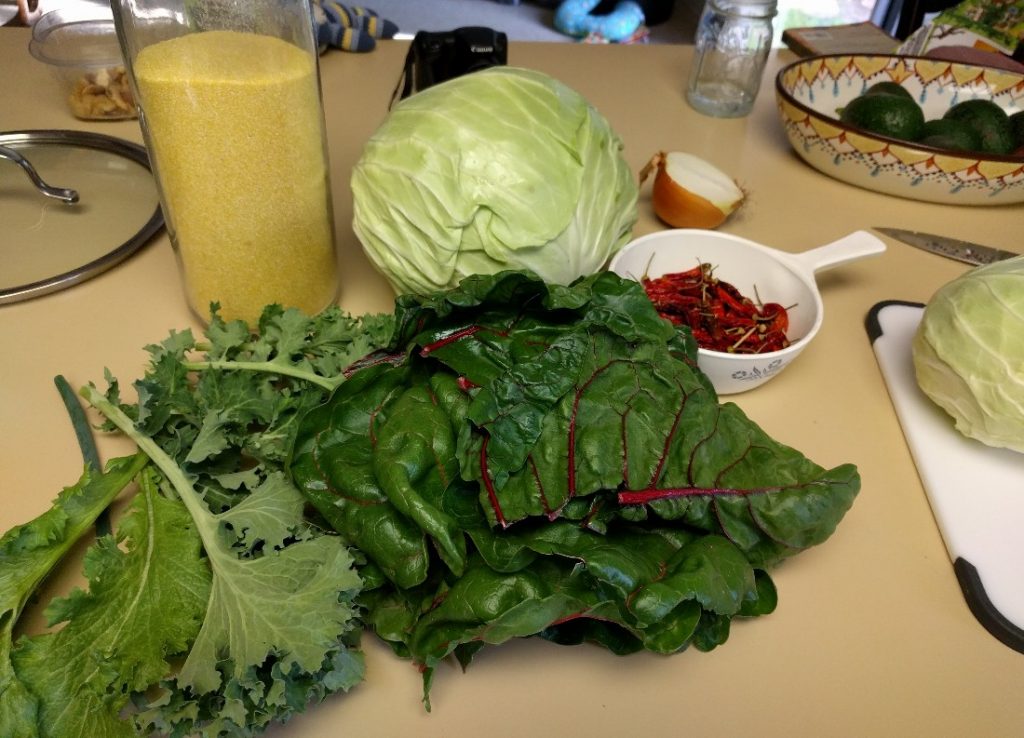
Sowing and planting
My favorite way to sow, plant, and space the greens in the garden is to start them thick by sowing or planting them in a crowded way, and then removing some plants once they’re about six inches high in order to give more space to the other plants. I eat those thinnings. (Those young plants taste the best.)
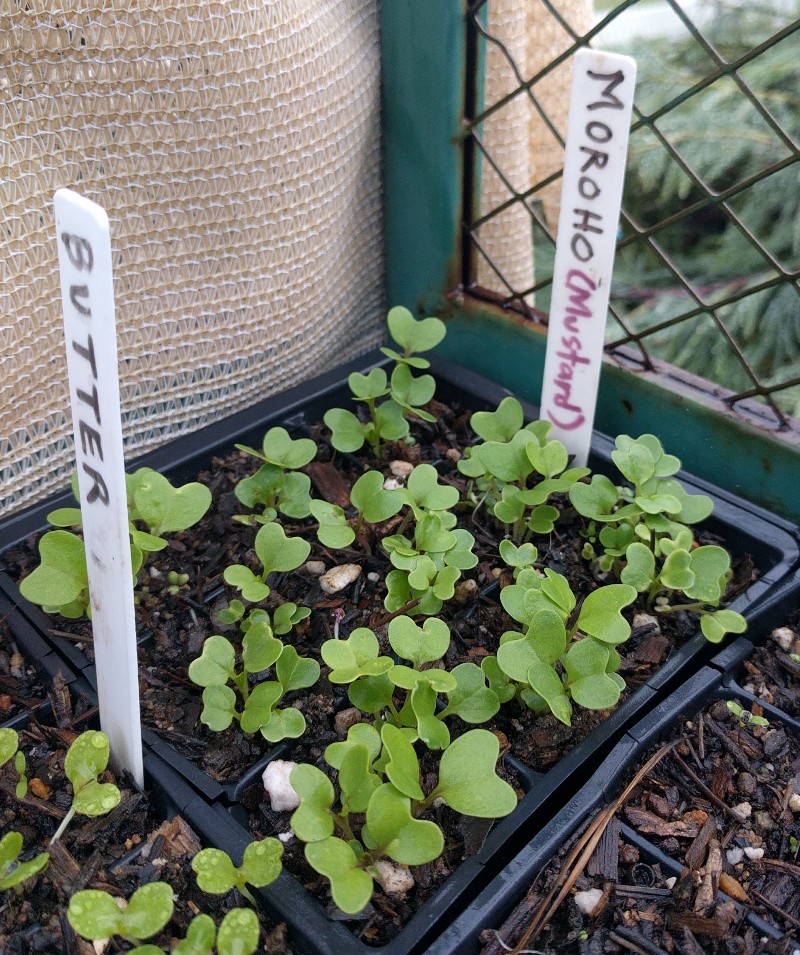
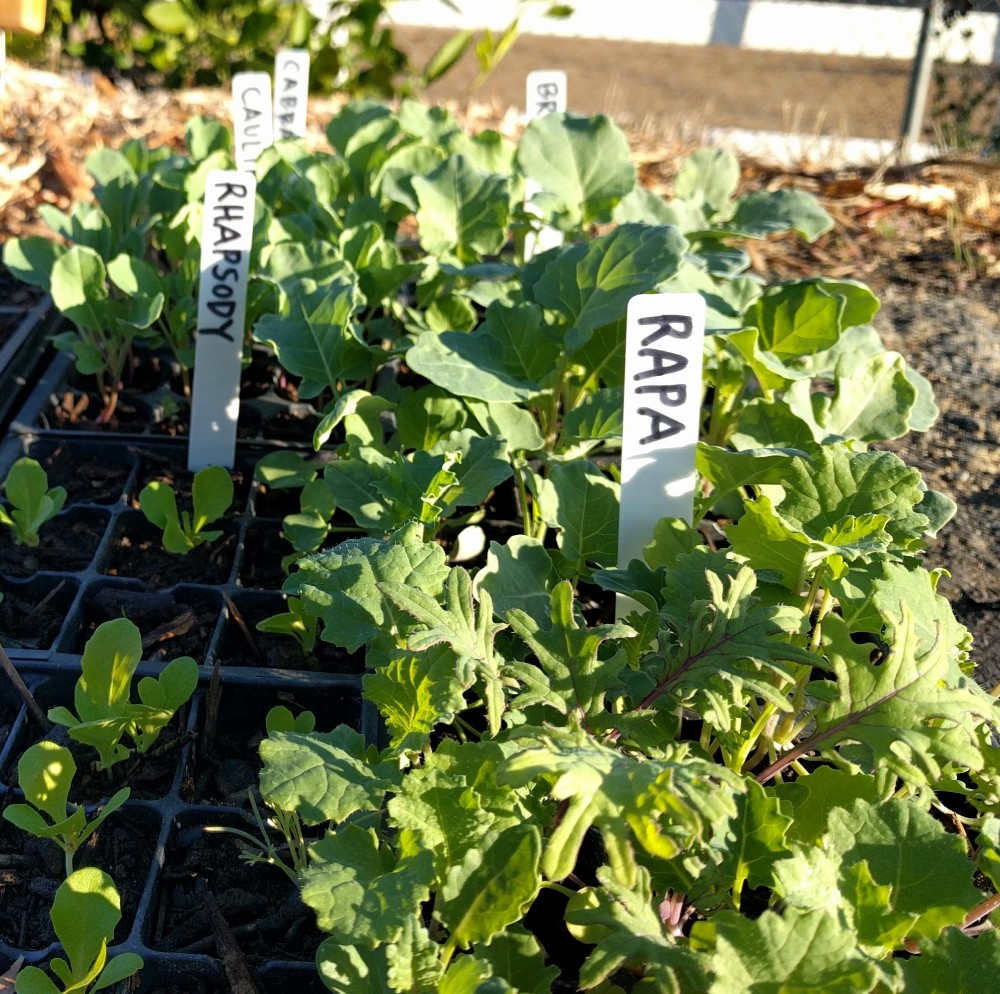
After young plants have been thinned, you end up with individual plants spaced at least a hand’s width apart, now able to stretch and grow larger.
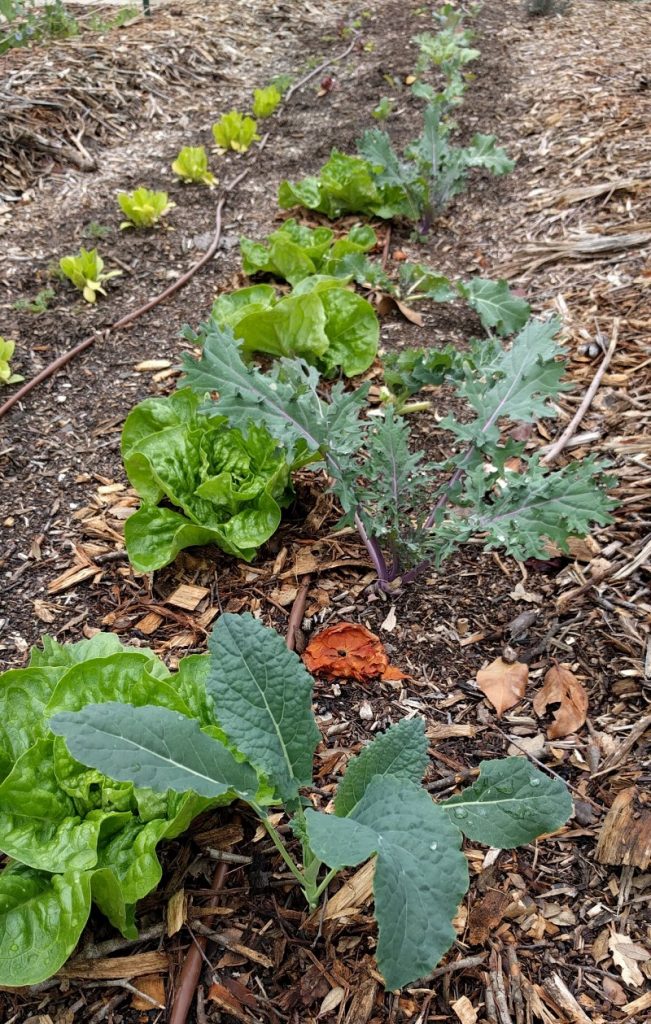
The spacing always depends somewhat on which type of greens we’re talking about. Chard gets much larger than kale, for instance, and so it needs more space.


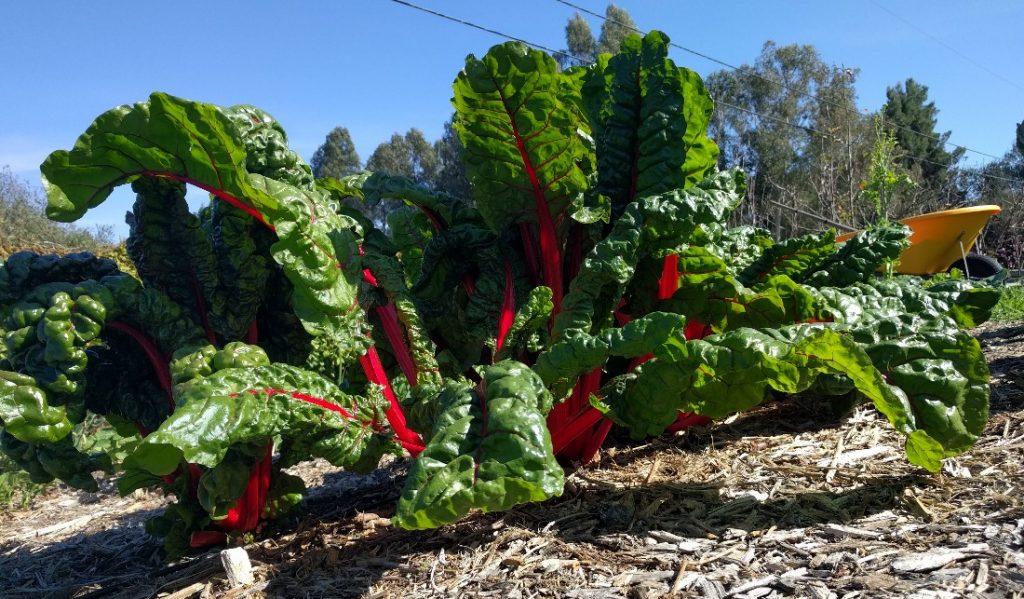
You might notice that there are lettuce plants near many of my greens plants, and that’s because they both enjoy growing in much the same conditions. For specifics on lettuce though, see my post, “Growing and harvesting lettuce in Southern California.”
Watering and pests
Greens don’t need much more or less water than any other vegetable. In the fall and spring, I water my greens mostly with drip lines, but it’s good to occasionally wash off their leaves.
When you do you often knock off some pests, like aphids or bagrada bugs. Don’t be afraid to spray the plants with a hard jet of water to blast these insects off leaves. It won’t hurt the plant, and it disrupts the pests.
Aphids and bagrada bugs are the main ones I’ve dealt with. And my main weapon is blasting them with water.
You’ll find that these pests have a season. They’re not around all year. Don’t give up on plants that harbor a few. If you do some water blasting and you don’t spray pesticides, then predatory insects and birds will do some control, the weather will change, and in time the pests will, as if magically, vanish. Happens every year.
Also, some years are just worse than others. Last year I had tons of aphids. This year I have almost none. Usually, their population is highest in March regardless.
Mulching and harvesting
I like to keep some mulch beneath my plants. Rough compost or wood chips work well. This makes it easier come harvest time, when there’s often no washing necessary because no soil has splashed up onto the leaves’ undersides.
You never need to harvest a whole greens plant. You pick outer, lower leaves and the plant keeps growing new ones from the center. Just be sure to leave a couple leaves in that central part of the plant and it will continue to grow well.
After some months, the weather will warm and the plant may shoot up to produce a flower stalk: “bolting” it’s called. And it’s natural. The leaves start to taste bitter at this time. Leave the flowers if you don’t need the space because bees and other insects that are helpful to your garden feed on them.
By the way, you can use this method of picking outer leaves with cabbage too. I always do. This way, you get to eat cabbage leaves for the couple months before the plant finally provides a head.
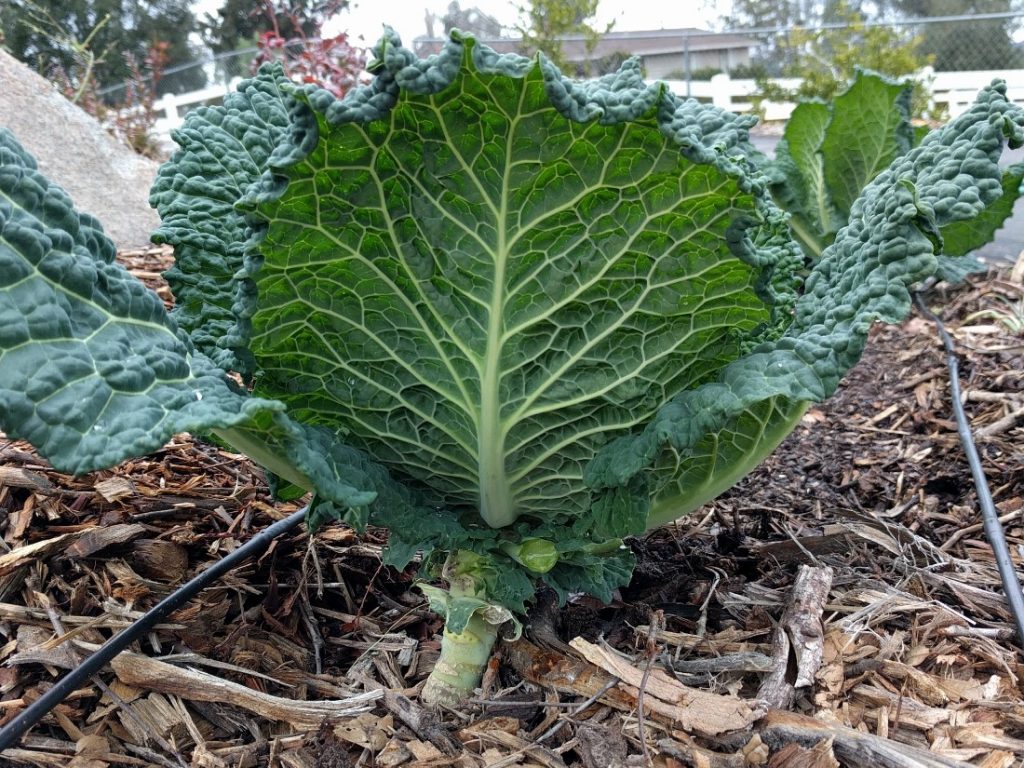
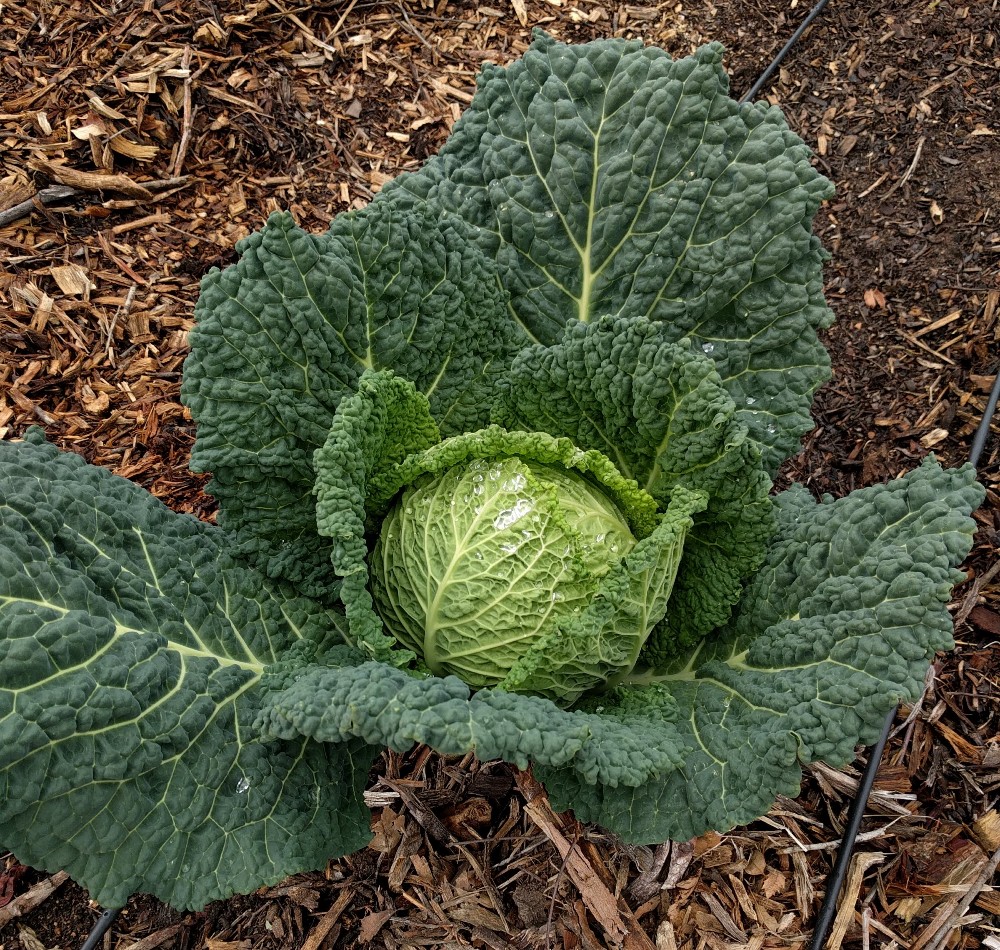
Unconventional and wild greens
Want to get really down to earth? Expand your definition of greens. Include leaves from broccoli and cauliflower plants. They taste very similar to kale and collards.
Or poke about the weedy corners of your yard, or take a hike in the hills, and you’ll find delicious wild greens growing in winter to add to the ones in your garden.
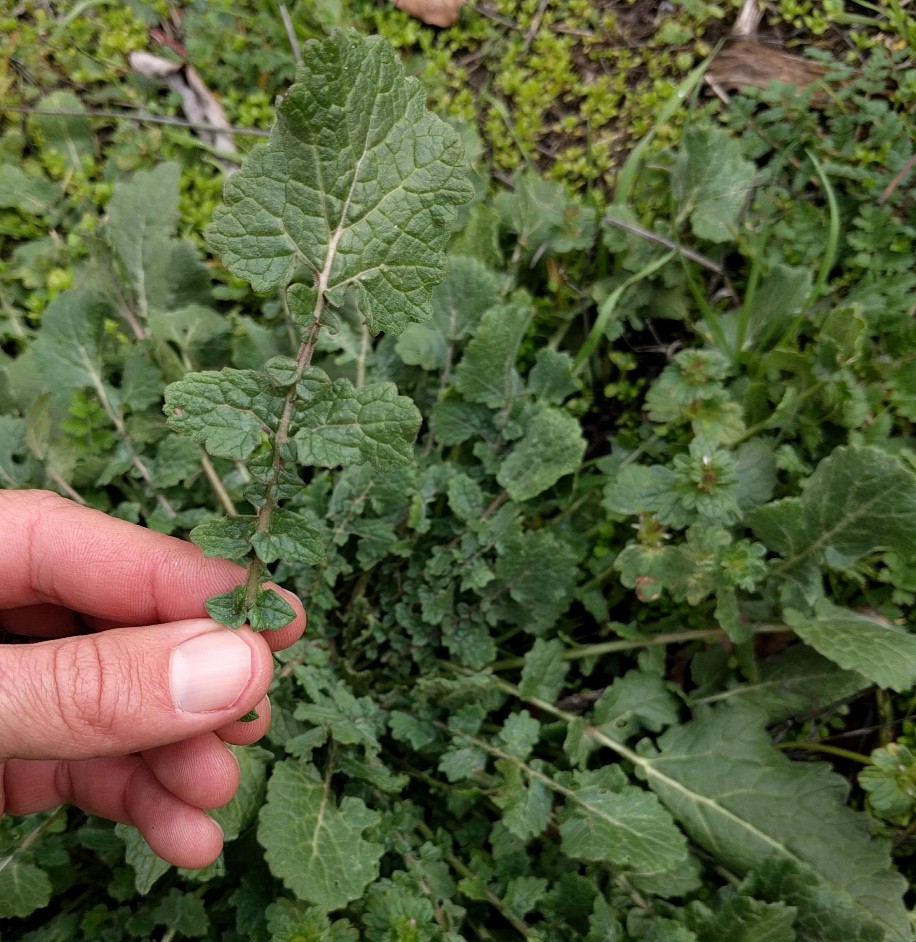
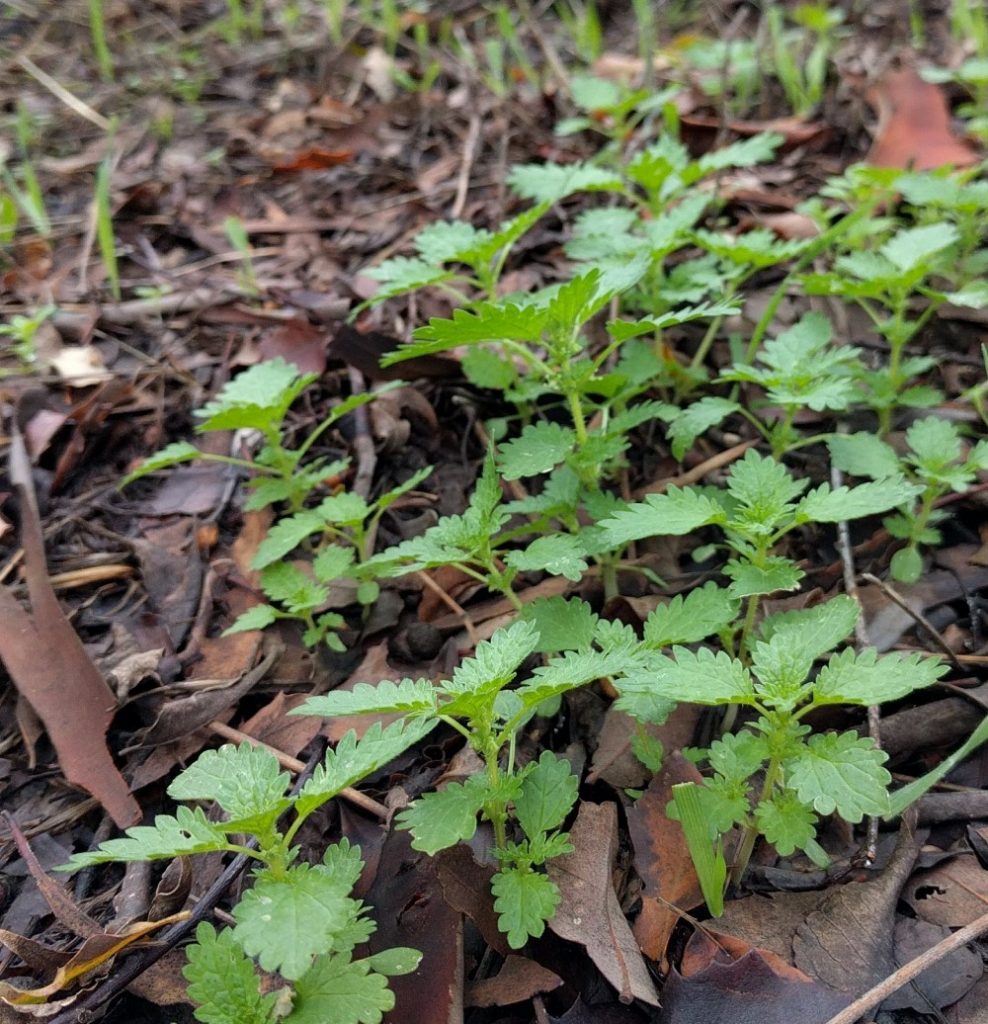
I didn’t add any unconventional or wild greens to the bag I harvested for that visiting technician, but yesterday I picked some of that wild mustard and nettle to add to our own dinner greens. I learned to pick various wild greens in Lesotho. Guess I learned almost everything I know about greens during my years there.
Time for dinner:
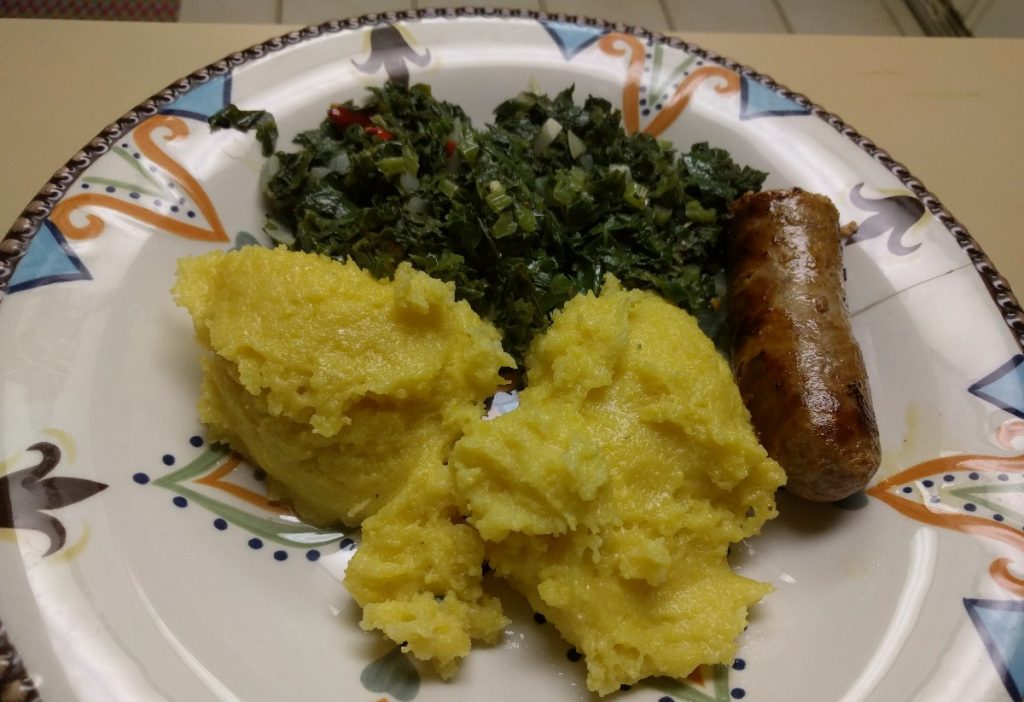
I don’t imagine it looks enticing to you, but you get used to it over the years. And eventually, you got to have some.
You might also like to read my posts:
Growing peas in Southern California

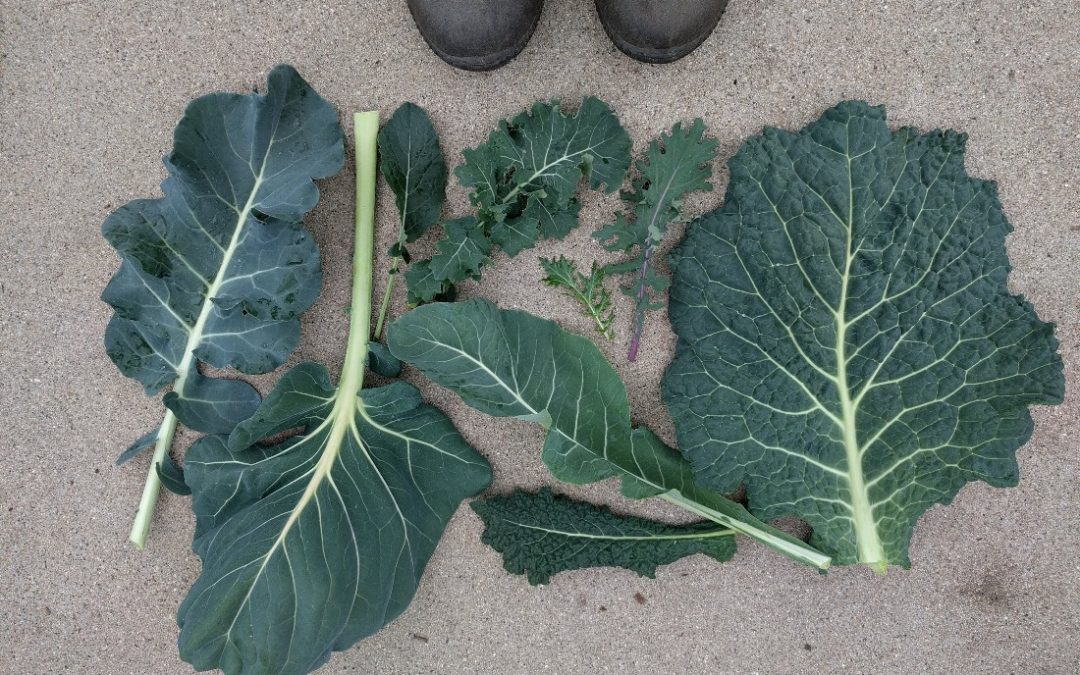


Great post! Thanks for the request answered! Be sure to apply to own garden!
Thanks for requesting this one, Shalom. I may have never written it otherwise. Had no idea it would be useful to many people.
Dumela ntate! I love your practical approach to food production. I’mi n East County San Diego. Things are different here. Good pix.
Lumela ntate! Kea leboha!
Eish! I haven’t heard of moroho for many years and then to serve it with pap and wors! The best. My greens are growing wonderfully especially after all this rains.
Wow, Nohline! You know the good stuff!
I can tell you speak from experience.
I was reading an article in a Costco magazine that described how they are growing lettuce and others in hot houses. I was impressed with the hydroponics and methods they use to avoid bugs and insecticides and produce all year long. Also, it seems those leafy veggies don’t have mud and dirt on the leaves. What do you think about this?
Hi Richard,
Growing in greenhouses and similar structures certainly has advantages, mostly in being able to modify temperature and humidity. It does allow some prevention of pest issues too, but it can also magnify some others. I say all this just based on observation of friends’ greenhouses and listening to farmers talk though. I’ve never grown in a greenhouse myself.
With regard to hydroponics, it’s amazing what people can do with it. A friend grew strawberries hydroponically last year and they were perfectly clean, tasted great, and had zero bug damage (even though they were grown in an outdoor hydroponics set up).
That being said, because of my rudimentary understanding of the soil food web, I’m skeptical that hydroponic berries and vegetables are as nutritious as those grown in soil.
Can you suggest a recipe for the greens? They look delicious!
Hi Mo,
I always cook the greens (moroho) the way I did in Lesotho, which is to chop the leaves and put them in a pot. To the pot I also add some chopped onions and chili peppers. Then I add a little water, canola or sunflower oil, and salt.
I cook the mix with the lid on over a medium flame. After a handful of minutes, I open the lid to mix everything around and then cook it for a few more minutes.
I like the greens to have a little crunch remaining, so I turn off the flame before they have gone mushy. I also like to stop the cooking while there is still some juice at the bottom of the pan. The juice, called “kholu” in Sesotho, is the tastiest part!
Greg,
Thank you so much! This reminds me of the method used to cook greens in West Bengal, India, where my family is from. I live in the Pacific Palisades Highlands, close to the beach but also very sunny due to altitude and location. Over the summer, I have had wonderful success growing amaranth. Also, I have successfully grown a variety of Indian squash which is harvested primarily for the vines and leaves. Also, every form of Malabar spinach does well here in summer, particularly one from my Grandmother’s garden in India that we call “Pui.” I would be happy to offer more information, and pictures as well, if you are interested. Thank you again for this lovely posting about growing greens!
Very cool, Mo. Thanks. I’d love to learn more. This brings back great memories. When I lived in Africa we’d also eat the leaves from squash and pumpkin vines, and we would gather leaves from wild amaranth plants (they called it “theepe” or “tenane”, I can’t remember which). Do you usually cook that kind of Malabar spinach or eat it fresh? I’ve never eaten Malabar spinach.
Hi Greg,
We cook the Amaranth, Malabar spinach, and Pui greens (called Basella in English). All three can be grown year round in our climate, and do very well in the summer heat. The Malabar Spinach and Basella have thick, meaty leaves that are comparable to Swiss chard in texture. You could easily incorporate any of them into your moroho recipe. The stems/vines of the Malabar Spinach are very tough, so I would just eat the leave and seeds while they are green and tender. But the stems/vines of the Basella are tender and edible with an asparagus-like texture. Also, the Amaranth can be grown as micro greens as well, ensuring quick and regular harvests! Let me know if you need any help locating seeds! I made your moroho recipe a few days ago, and my fiancé said it’s the only way he wants to eat greens now!
Great to hear, Mo! I’ll look for some seeds and plants and try them out.
Thanks Greg for including pictures of the assorted greens. Please keep doing that as the photos are perfect for helping me to get to know what they look like in their raw state. As I reside in the Scripps Ranch/Miramar area, it’s great to have you as a guide as to what plants to select and grow here. Cheers, Sam
Hi Sam,
Thank you for the kind words and the feedback. I am often unsure of whether I’m bogging down a post with too many photos. Now I know that, at least in this case, I wasn’t.
Thanks Greg! I passed through Lesotho once with a group and being a vegetarian, my hosts were so worried what to feed me. I feasted on greens and papas. Still remember the sweetness of those greens, grown in “back door” gardens. Thanks for reminding me. I’ve been putting off eating my chard but I think I’ll head out back now and clip a few for scrambled eggs with garlic!
Hi Amy,
Love this! Brings back so many memories. Chard was the main green I grew in Lesotho (which they called “spinach” incidentally), and whenever I found eggs to buy I’d always scramble them and add some of my chilipeppers and chard in there. So good!
Greg, what a wonderful post! Never enough pictures in my opinion and yours are really good. Question: have you ever grown iceberg lettuce? Mine have not headed up and I can’t find a lot of info. Thanks!
Thank you, Judith. I’m not growing iceberg lettuce this year, but I love the crunch of iceberg and I have grown it in the past. My best iceberg crops have come from early fall plantings that mature in late fall or very early winter.
The only problems I’ve had with iceburg is bugs getting into the heads because they’re not as tightly wrapped as, say, a head of some kinds of cabbage. So sometimes I’ve had to wash out a few earwigs, for example.
One thing to watch out for is harvest time. Don’t wait too long. Don’t wait for the head to look really big. Once it forms a head, poke it with your finger and if it feels dense, harvest it. If it still feels loose, let it grow a little longer. Especially be watchful in times like now where there’s a warm spell during the winter. Cool season crops like lettuce can mature fast and they also need to remain well watered.
Bravo! Your posts are a joy, thank you! xx
Do you have a place to get sweet potato slips since the nurseries are not allowed to ship them to Ca.? I remember starting the slip myself as a very slow process. Do you start your own?
Thanks for your commentary. I also live in East County
Hi David,
I just start my own. I don’t do anything complicated; I just bury a sweet potato in the ground and eventually it sprouts. If I’m burying a new variety then I do it in the fall or winter so it sprouts when the weather warms in spring. Otherwise, I always have sprouts coming up throughout the yard wherever I’ve grown them in the past because I never seem to find all the sweet potatoes at harvest time.
I did write a post about this a while back: https://gregalder.com/yardposts/how-i-grow-sweet-potatoes/
I started doing this because of the quarantine as you mentioned.
If you buried a sweet potato right now, you might get sprouts in time to transplant in July and still get a harvest in late fall. I usually just let the plants continue growing until a frost nips back the foliage around Thanksgiving or December. Then I harvest.